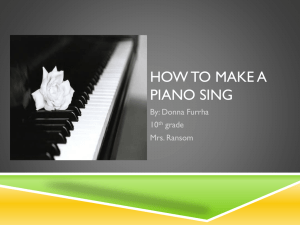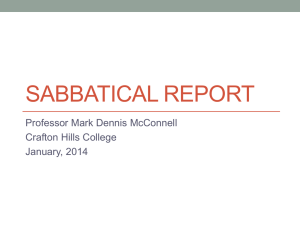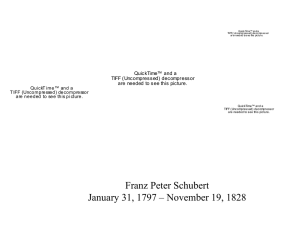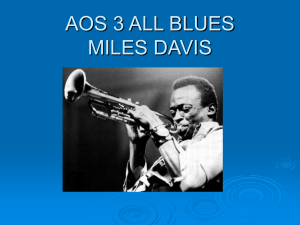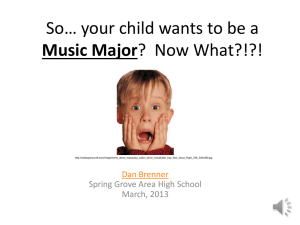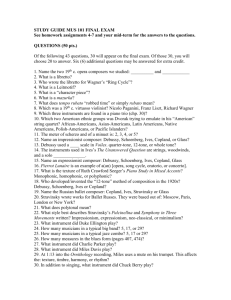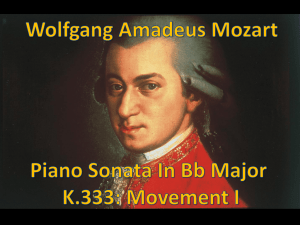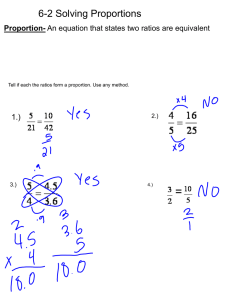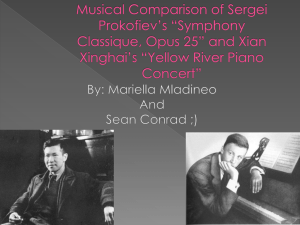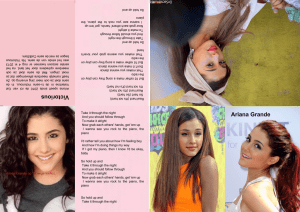The Intermediate Piano Works of Aaron Copland
advertisement
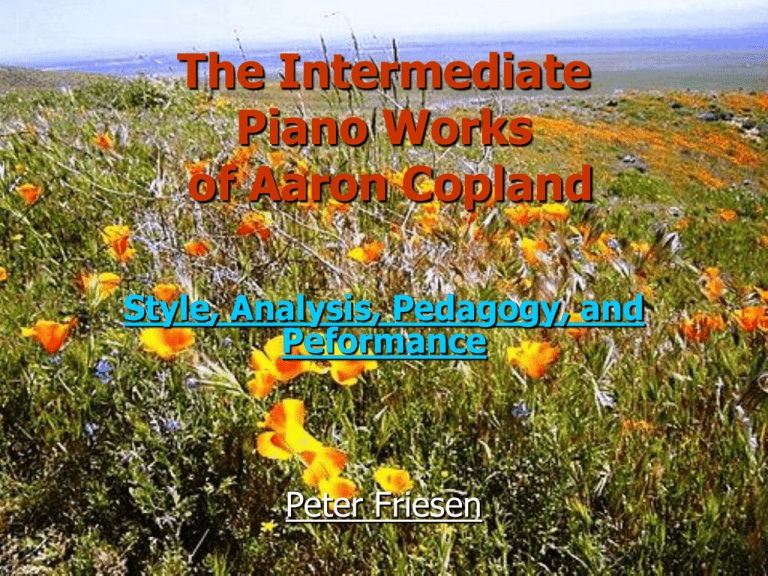
The Intermediate Piano Works of Aaron Copland Style, Analysis, Pedagogy, and Peformance Peter Friesen The Piano Works Piano Variations (1930) (orchestrated 1957) Piano Sonata (1939-1941) Piano Fantasy (1952-1957) Intermediate Works Moment musicale, 1917, Waltz Caprice, Sonnet I, 1918, Sonnet II, 1919, Sonnet III, 1920 – all unpublished Scherzo Humoristique: The Cat and the Mouse, 1920 3 Moods, 1920–21: Embittered, Wistful, Jazzy Passacaglia, 1921–2 Petit Portrait, 1921 Blues no.1 (Sentimental Melody: Slow Dance), 1926–7 Blues no.2 (Piano Blues no.4), 1926 Pf Blues no.2, 1926, rev. 1934 (arr. chamber orch, 1978–9) Sunday Afternoon Music, 1935 The Young Pioneers, 1935 More Intermediate Works Billy the Kid: Suite from the ballet: Nos 1, 2, 5 & 8, 1938 Billy the Kid: Waltz from the ballet, 1938 Episode, (organ), 1940 Midday Thoughts, 1944 (rev. 1982) Midsummer Nocturne, 1947 (rev. 1977) Piano Blues no.1, 1947 (arr. For chamber orchestra, 1978–9) Piano Blues no.3, 1948 Down a Country Lane, 1962 In Evening Air, 1966 Night Thoughts (Homage to Ives), 1972 Proclamation, 1973 (rev. 1982) Duet/2-Piano Works Concerto for Piano, 1926 Dance of the Adolescent (arr. excerpt from ballet Grohg), before 1932 El Salon Mexico, 1936 Fantasia Mexicana, 1936 Two Children’s pieces, 1936 Billy the Kid: Suite from the ballet: Nos 1, 2, 5 & 8, 1938 Billy the Kid: Waltz from the ballet, 1938, Rodeo: Dance Episodes Nos. 3&4, 1942 Danzón cubano, 2 pf, 1942 (orchestrated 1946) Danza de Jalisco, 2 pf, 1963 (arr. of orch. work) Dance Panels, 1959 (ballet, arr. 1965 for two pianos) Aaron Copland (1900-1990) Early influences: piano music of Liszt, Chopin; music of Scriabin, Mussorgsky Studied composition with Rubin Goldmark in New York Studied piano under Victor Wittgenstein and Clarence Adler At 20, moved to Paris to study under Boulanger; also studied French piano music under Ricardo Viñes Aaron Copland (continued) Published his first work, The Cat and the Mouse, in 1920 after his arrival in Paris Upon return to the USA, was involved in various music societies to promote new music; was championed in his early career by Koussevitsky, later by Bernstein Taught at Harvard in 1935 and 1941 on an interim basis; in 1951, was honored as the Norton Chair of Poetics Less productive later in life, esp. after onset of Alzheimer’s General Style Characteristics 4 overlapping style periods: Jazzy, abstract, populist/Americana, serial Transparent textures/economic use of pitch material Disjunct melodies Static key areas Ambiguous harmonic language Use of familiar harmonic elements (e.g. triads, tonic/dominant) in non-traditional ways Use of colorful descriptive language in scores Highly syncopated, often declamatory rhythms Down a Country Lane (1962) Ternary form Disjunct melody Irregular phrasing Avoidance of tonic and strong cadences Creates wistful/longing effect Unclear key areas in B section Unresolved modulations Examples of disjunct melodies Avoidance of Tonic/Cadences Down a Country Lane Pedagogical Notes One of Copland’s piano works that doesn’t require large hands to play comfortably Introduction to non-traditional harmonic devices, but still very accessible to the listener Familiar elements (ternary form, unchanging meter) make the work accessible for earlier intermediate pianists Contrapuntal in nature – 2- to 3-voice textures dominate The Young Pioneers (1935) 7/8 meter Meter changes at transitions between formal sections Ternary form Use of repetitive motives to explore variety of colors Sparse texture, limited pitch material Harmonic center (not key area) of Eb/D# (3+4, alternates occasionally with 4+3) Meter Changes at Transitions The Young Pioneers Pedagogical Notes Think 3+2+2 in general (beat 6 often has a tenuto indicated) Try not to make this too cerebral - encourage a “feel” of the rhythmic scheme Have student come up with short lyrics which have accents on the strong beats Have student clap 3+2+2 while you play for them Dynamic variety a must for a strong performance Piano Blues No. 4 (1926) Blatant example of Copland’s “jazzy” style Use of blue notes Syncopated rhythms Repetitive vamping style No indicated key signature Published 1949 Use of Blue Notes Syncopation Piano Blues No. 4 Pedagogical Notes Player should have large hands Frequent, large jumps Syncopations make it easy to lose the beat without strong counting The Cat and The Mouse “Scherzo Humoristique” (1920) Most directly programmatic of intermediate works Utilizes extensive augmented and wholetone harmonies Wide rhythmic variety Frequent tempo changes Through-composed with repeated themes Use of Whole Tone Scale The Cat and the Mouse Pedagogical Notes Rapid jumps Highly patterned themes and motives Pacing/tempo relationships critical Great piece for teaching dramatic interpretation Silence is golden Petite Portrait (ABE) (1921) Use of limited serialism Use of familiar triadic harmonies in nontraditional ways Use of widely-spaced, open intervals Declamatory rhythm Non-melodic composition Petite Portrait Pedagogical Notes Frequent 10ths No melody – can explore color and harmonic shaping Bold dissonance

